Tracking a baby’s weight gain is one of the more important things to do during his early life, but many parents don’t know how to weigh baby at home accurately.
Knowing how to weigh baby at home properly is crucial for tracking the baby’s growth week after week especially as you’re going to need pretty accurate readings of your baby’s weight to know if his growth is progressing at a healthy rate.
After the doctors and pediatricians present during delivery do the first weigh-ins to check if your child has come out healthy or not, they’ll tell you what your little one’s birth weight is.
This is also known as the first weight.
Don’t worry if you see a slight dip in weight after that though.
It’s customary that the next time you check how much your baby weighs, you’ll see he is lighter than before.
He’ll start gaining it back quite quickly, at a rate of about 5-7 ounces per week for the first few months.
Obtaining accurate measurements of your baby’s weight should ideally be part of a weekly routine so you can see if your little one is growing at an adequate rate.
If your child’s weight gain deviates from the standard progression increments, then it’s time to schedule a check-up to see what the problem is.
But, with so many ways of checking weight, what’s the right way to weigh a baby at home?
Well, there are several, and they’re rather simple and pretty accurate.
I’ve listed them below and you can decide which method is the easiest and most reliable one for you.
How To Weigh Baby At Home In 3 Different Ways
If you’re wondering: How can I weigh my baby at home? the following tips will help!
1. A baby scale
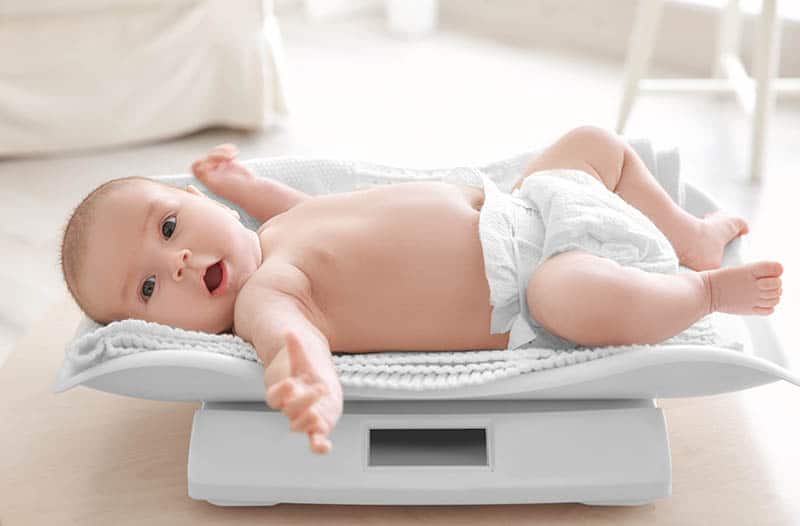
The first method you’re likely to see recommended everywhere is the use of a baby scale.
These precise instruments are meant to give accurate weight readings for babies that weigh up to 40 lbs.
These infant scales come in all sorts of shapes and sizes.
They also come with a variety of additional functions that are useful during measuring like an arm that serves as a length measure or scales that can also be used for weighing produce, etc.
You’ll be able to distinguish a baby scale from all the other types of scales by the tray at the top.
This tray is designed to comfortably fit a baby’s body with enough space on the side for you to be able to easily pick him up afterward.
When going out to buy one, make sure to get a multi-function digital baby scale as well as one that has no sharp edges on which your baby might get injured.
You should also make sure that it’s properly calibrated and very accurate.
This is especially important if you’re buying a second-hand toddler scale or renting one as it’s likely that those are a bit worn.
That said, even new ones might be off depending on what brand you’re purchasing.
These scales aren’t that expensive either, usually costing between 50$-100$ on Amazon, but they might feel like too much of an expense for any family on a budget.
It is for this reason that I recommend getting one that’s able to perform additional functions such as replacing a kitchen scale or similar.
Those are usually the best baby scales, both for your budget and the intended purpose.
Operating the scale
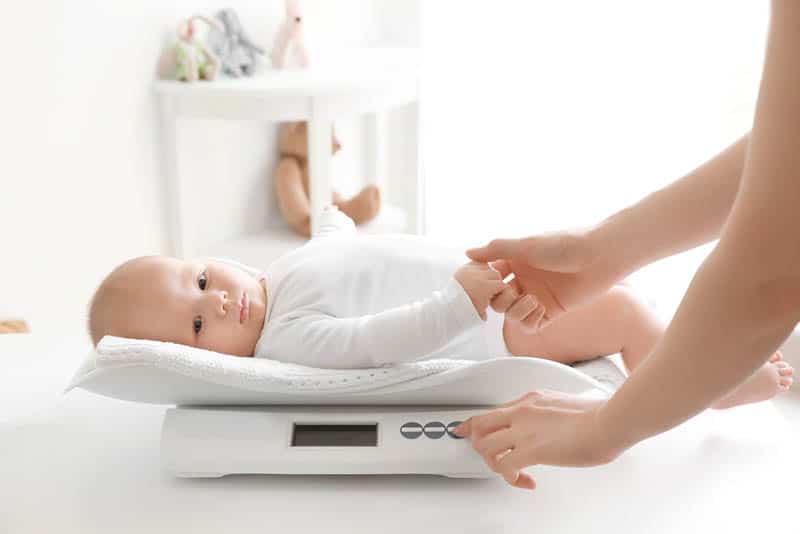
Using a baby scale isn’t very complicated – in fact, it’s pretty much like any other scale.
The first thing you want to do is set the scale on a flat surface so the weight can be distributed evenly.
After that, make sure you reset zero on the scale so you can get an accurate measurement.
This is where a digital scale works better than a regular one as it’ll help provide precise readings and you can put a swaddle or blanket over the measuring area so your child doesn’t feel cold.
That weight is ignored on many digital scales, though some will require manual input to void it through the pressing of the tare key.
Once you have that set up, gently place your baby onto the measuring area. Stay close to prevent any accidents like the baby slipping out of the tray.
When you’re sure your baby is properly secured, read the weight on the scale and jot it down somewhere.
It’s useful to keep track of stats in one place through a growth chart by using a notepad, a notebook or an excel spreadsheet so you can see the overall progress.
2. A bathroom scale
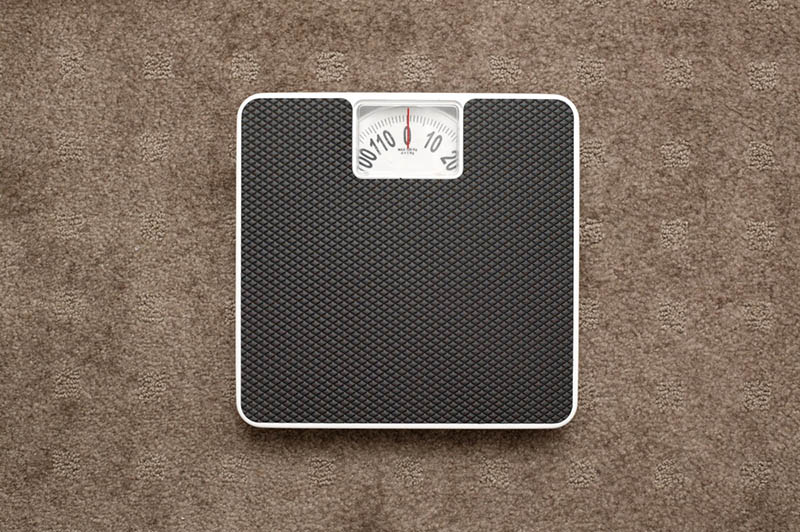
If you want to save a little bit of money, you can go for the alternate option which is to weigh your baby using a bathroom scale.
It’s slightly more math-intensive, but nothing more complicated than a little bit of subtraction.
For this method though, you’ll need to hold your little one yourself.
The idea here is to first weigh yourself and log that weight, then step off the scale, pick up your child and then step back onto the adult scale.
Take your new weight, simply subtract your solo weight from it and you’ll have your child’s weight.
If you can get a household scale that’s slightly more precise than a regular one (in other words, it measures pounds in tenths) that’d be ideal for this case.
Otherwise, prepare to be a few ounces off here and there, but to be honest, a scale is never 100% accurate anyway.
Do note that for this method to work, your child will need to be naked or you’ll need to weigh his clothes separately to get the most accurate measurement.
This might be difficult in the colder months unless you first heat up the room to a comfortable temperature for your child.
You don’t want him getting sick or catching a cold after all.
Sure, you won’t have the advantage of having that extra measuring arm to track your child’s height like the baby scale has, but you can always just use plain old measuring tape instead.
3. A kitchen scale
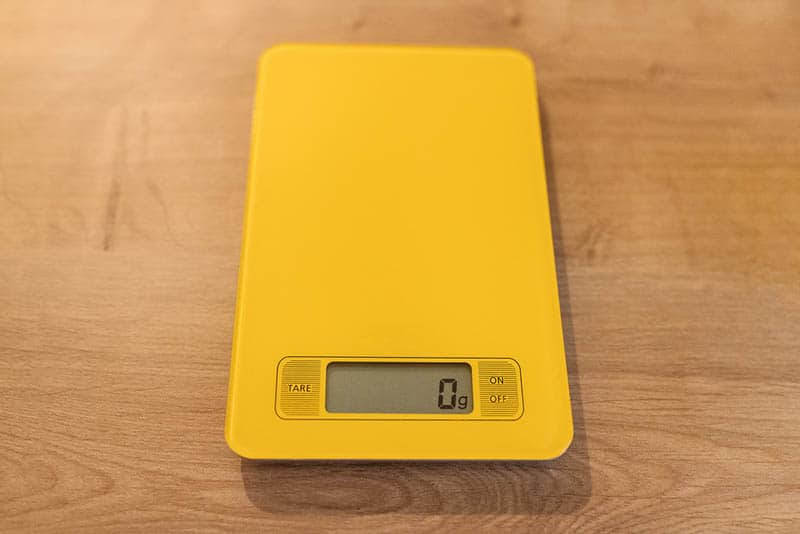
You heard that right, if you’re really low on budget and only have a kitchen scale at home, you can even use that too, but only for really young kids.
The method would be similar to that of a baby scale.
Make sure that the scale is set to 0 and place a blanket over the top to keep the child from getting cold before placing your little one on the tray. Once your baby is safely positioned, read the weight.
The numbers are once again likely to be slightly off, but the scale should give more consistent results through continued use.
So What’s The Best Method Then?
The best method when it comes to how to weigh baby at home is a mix of checking the weight at home alongside the scheduled visits to the doctor as it’ll give you the most up-to-date results.
Plus, you can alert the doctor or have an impromptu visit should something pop up.
What To Do If You Can’t Weigh Your Baby At Home?
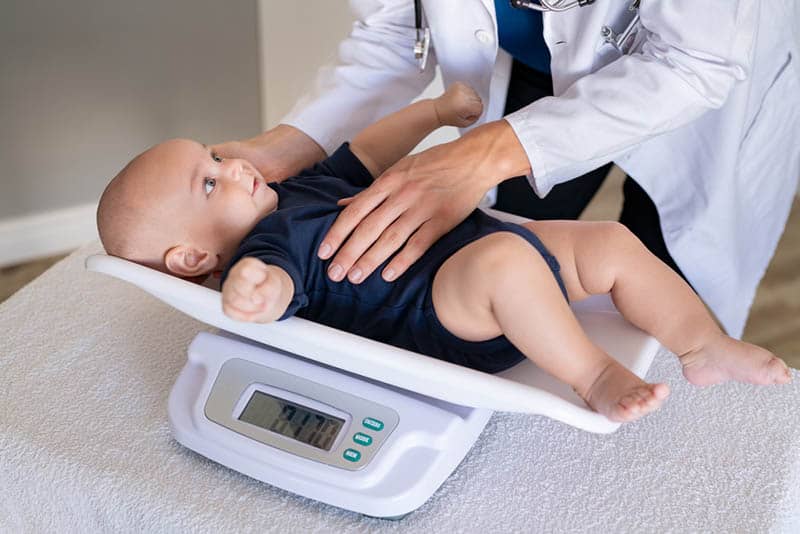
If any of these methods end up proving to be too much of a hassle, you can always just go to a medical professional and use their scale to get everything done on the spot so you don’t have to guess if your child is of average weight or if there are any issues.
You can get the medical advice right then and there, though this method might end up being a bit more expensive, especially if you are charged for this service in your area so I wouldn’t recommend doing it on a weekly basis.
Once every 2-3 weeks would be ideal, though I’d suggest working out a proper plan with the medical professional that works out for you and your baby.
First, make sure to actually schedule an appointment with your doctor before trying to do anything else.
You’re likely to be greeted by a closed door to the pediatric office if you arrive without an appointment.
Going to the doctor to weigh your baby is better at times because their baby scales are a lot more accurate than the ones you can get online, down to the smallest percentile.
What To Do If Your Baby Is Over/Underweight?

Now that you’ve learned how to weigh baby at home, it’s time to learn what to do if something goes wrong.
Should you notice a deviation from the standard rate of weight progression, you should schedule an appointment with your family doctor, pediatrician, or any other qualified medical professional.
They’ll run further tests to determine whether the problem lies with the baby himself or if there’s an issue with the breast milk that you’re breastfeeding him.
The most likely causes can be an imbalance of hindmilk and foremilk in your breasts or your diet if your breast milk is the cause of the problem.
Alternatively, it could be an intolerance on your child’s side or bad stomach flu among other potential causes.
Whatever the case, your pediatrician will likely direct you to a lactation consultant to help educate you on the proper steps that you’ll need to take to help your baby’s health-o-meter grow instead of decrease so you can get him back on track.
This advice usually includes following specific diets or spacing out breastfeeding periods accordingly to fix whatever issue your little one might be having.
RELATED: What Not To Eat When Breastfeeding: Specific Foods To Avoid
In Conclusion
Learning how to weigh baby at home isn’t too hard as there are a few different options available.
All of them are quite simple to perform and are equally as effective.
My personal recommendation would be to get a decent baby scale, a brand new one rather than a second-hand one as the latter is likely to be a bit off.
Take good care of your own and you can sell it to someone else who needs it when you’re done with it.
However, if buying a new one will put too big of a dent in your already strained budget, then I recommend using the bathroom scale method instead.
It’s almost as accurate and just as easy to do, though it does take slightly more effort on your part.
For the really budget-friendly option, you can just get a kitchen scale and use it to help weigh your child, though I personally wouldn’t recommend that if you can avoid it.
Alternatively, you can just go to your doctor and do it there to save you the trouble of procuring a baby scale for your home – plus, it’ll save you some space.
Whatever the case, make sure to maintain a routine of weigh-ins so you can track your child’s growth and catch anything unusual on time so you can fix it before it becomes a real problem.
You got this, mammas!
Like this post? Please share or pin it for later. You can also stay in the loop and follow us on Facebook, Instagram or Pinterest.
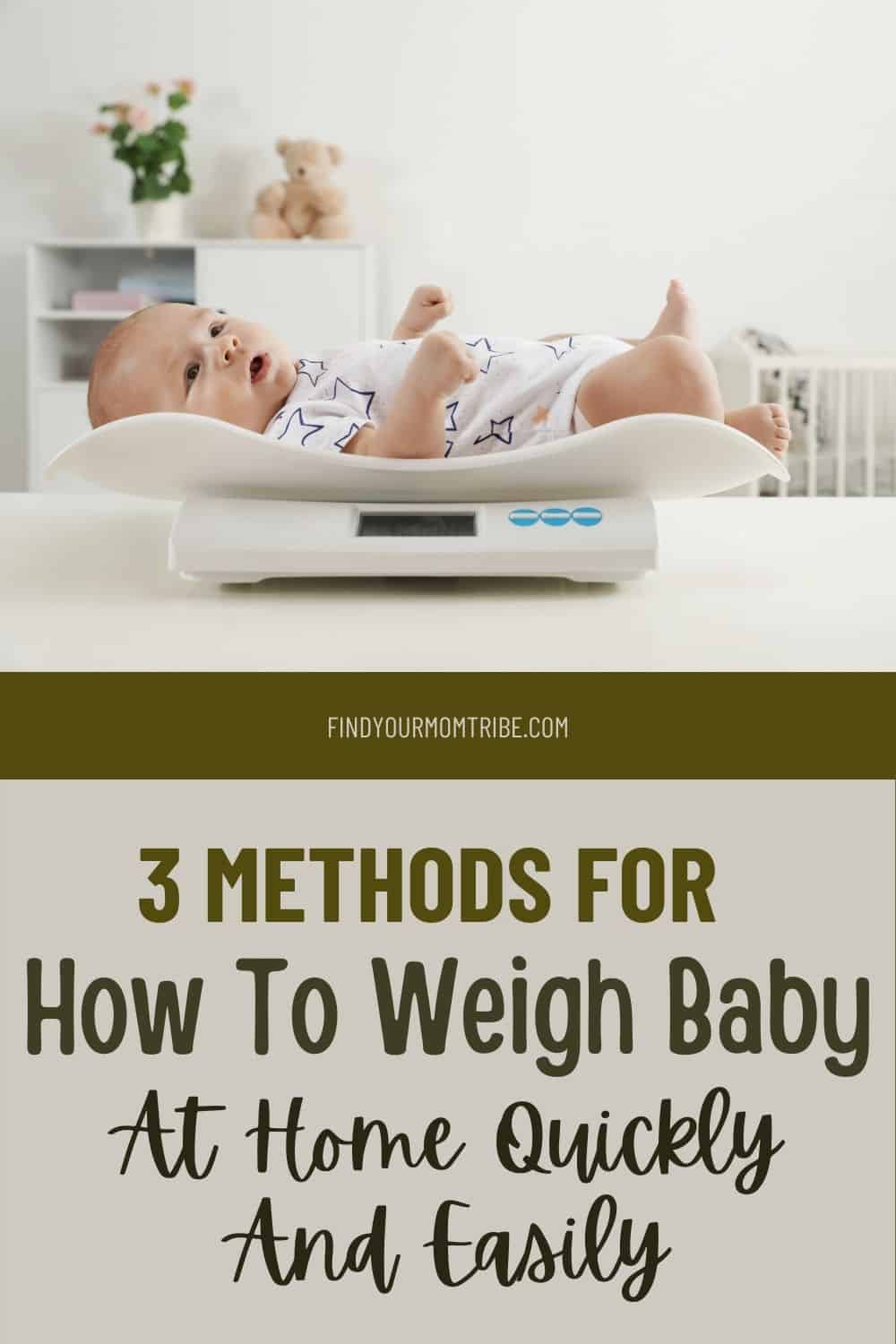
We love honesty! Find Your Mom Tribe is an Amazon Associate and we earn from qualifying purchases through affiliate links at no extra cost to you. Please see our full Amazon Affiliate disclosure for more information.

